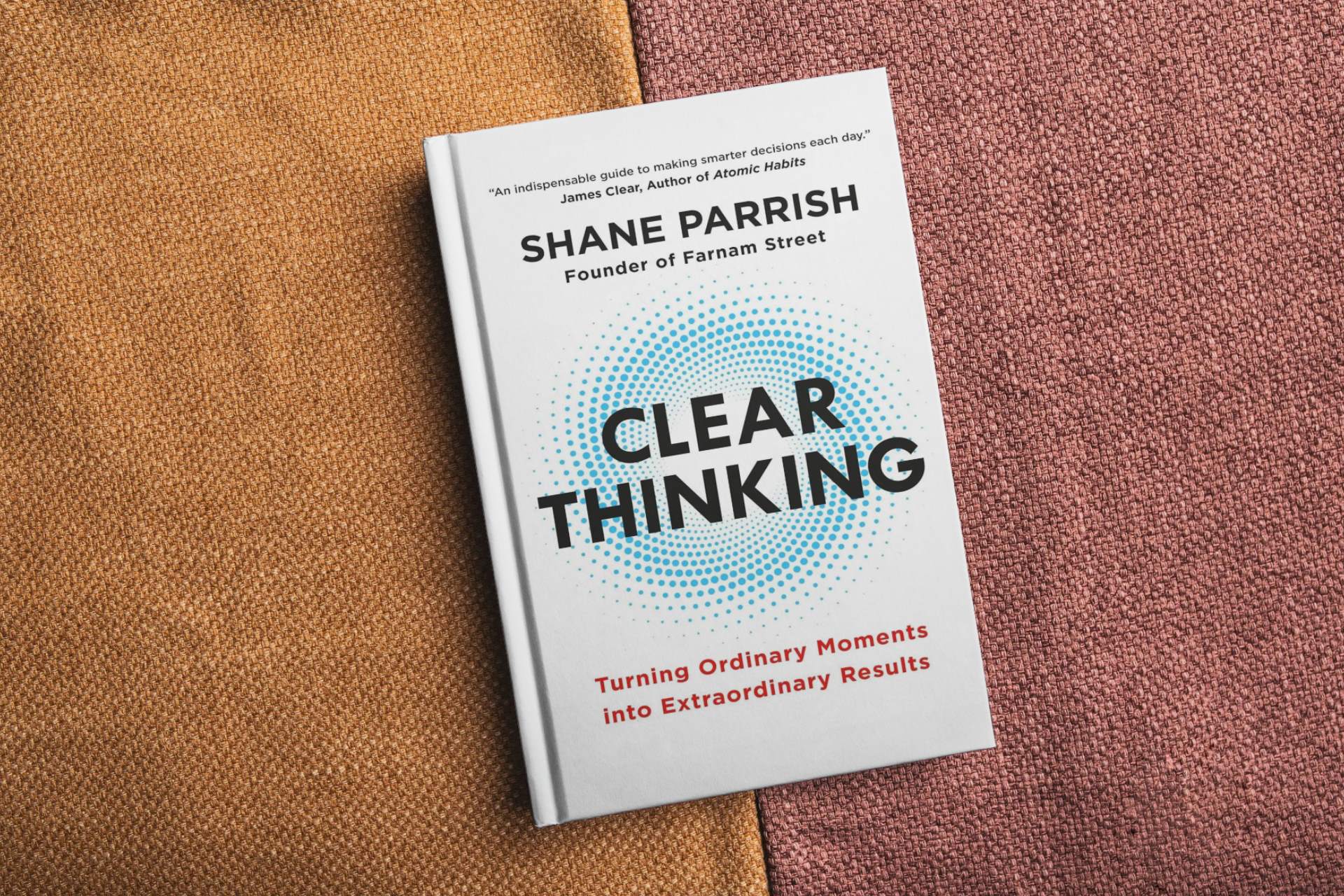In Clear Thinking: Turning Ordinary Moments into Extraordinary Results, Shane Parrish discusses the importance of creating space to think clearly before making a decision. Knowing when a judgment is necessary is also as important – sometimes ordinary moments and decisions matter more than big moments and decisions.
One key concept to be aware of is how the outcomes of our decisions position us. Ideally, we want to consistently make good decisions to improve our positions. In turn, being in a good position can help us continue to make good decisions.
Anyone looks like a genius when they’re in a good position, and even the smartest person looks like an idiot when they’re in a bad one.
Shane Parrish, Clear Thinking
Logically, the first step to improving our positions is to identify when decisions need to be made. Then, pause to create space to assess how we feel, to reason, and to think clearly.
We sometimes feel rushed to make decisions on the fly, only to regret the outcomes later. We then put in so much effort to fix the problems. Instead, it is to expend upfront effort to think clearly, make good decisions, and move closer toward our goal.
However, some biological tendencies stand in the way of good judgment. Shane calls them the four defaults.
The Four Biological Defaults and Clear Thinking
The emotion default is in control when feelings overwhelm us. It increases our chances to respond based on how we feel instead of how we reason. In the heat of the moment, we are emotional and more likely to make mistakes. We are more susceptible to being hijacked by emotions when we are tired, hungry, distracted, rushed, stressed, etc.
The ego default occurs when we are arrogant and care about self-image more than about what is right. We sometimes feel like we know it all and we don’t need to listen to what others think. Or we feel like we are the boss, and everyone should depend on us. Shane gives the example of someone who doesn’t give their 100 percent at work because they feel underappreciated.
The social default is another term for conformity. We like to “fit in” with other people and worry about doing something different because that can make us stand out, feel like outsiders, or disappoint others.
The inertia default is striving to maintain the status quo – even if it is a bad status. We are creatures of habit and don’t like going out of our comfort zone. This may be bad because inertia discourages you from changing for the better.
Ways to Improve Defaults
A good way to modify your defaults is by creating an environment where your desired behavior becomes like a habit. For example, if you like to read books, it is a good idea to hang around people who like to read.
There are other ways to press pause on your defaults:
- Self-accountability: don’t make excuses for mistakes; focus on the next move to make things right; don’t complain because it’s unproductive; don’t run on autopilot.
- Self-knowledge: know your abilities and inabilities; know your strengths and weaknesses.
- Self-control: be able to do the right thing regardless of your feelings in the moment; control your impulses.
- Self-confidence: don’t be afraid of standing out; admitting that you are wrong is not a weakness; being able to change your mind to improve is a strength; be able to adapt based on changing circumstances.
Improving Through Exemplars and Practice
Shane explains that you can also improve through choosing the right exemplars and practicing imitating them.
Exemplars can be people who lived a long time ago and or someone alive today. It could be your boss, one of your colleagues, a family member, or even a popular figure.
You can learn from their good values and skills. These exemplars don’t have to be perfect – indeed, no one is perfect.
Get to know more about them and how they act. Try to think of what they would do if they were in a similar situation.
You don’t have to limit yourself to one person. You can choose multiple role models and treat them as your personal board of directors.
Protect from Making Bad Decisions
To avoid making bad decisions, Shane lists the following safeguards:
- Prevention: don’t make decisions in the heat of the moment – you should take a step back to think clearly.
- Automatic rules for success: set rules and don’t say yes right away.
- Creating friction: increase the effort it takes to do things contrary to your goals. Likewise, reduce the effort it takes to do things that support your goal
- Put in guardrails: allocate time to clear your thinking before making a decision. Shane suggested two questions to ask yourself: “What am I trying to accomplish?” and “What are the things I need to accomplish with it?”
- Shifting perspective: see issues from different angles to get a better understanding.
Clear Thinking and Decision Making
The book breaks down the decision-making process into the following steps: defining the problem, exploring possible solutions, evaluating the options, and making judgment to execute the best option.
Defining the problem requires that you decide what you want to achieve and what obstacles are standing in the way. You have to be meticulous in defining the problem. Otherwise, you may end up just treating the symptoms – or putting out fires. You will know if you have treated the symptom because the problem will occur again and again.
Explore solutions by dealing with reality. We tend to pick two solutions, but Shane encourages us to come up with more options. Even a combination of seemingly contradictive options may be an option.
Evaluate the options by choosing clear, simple, decisive, and goal-promoting criteria. Whenever possible, try to obtain information about the problem from the source. The closer you are to the source, the better the quality of the information. Sometimes, things tend to get distorted when conveyed through several people. Also, make sure the information is relevant and accurate.
Make the judgment and finally do what you need to do. The speed at which you make the judgment depends on two things: consequences and reversibility. If the decision is highly consequential and irreversible, then you may want to delay your decision for as long as possible – to a point where you can make a good decision.
The author explains the importance of adding a margin of safety on top of this in case something goes wrong. Ultimately, we may never be able to guarantee that our decisions will result in good outcomes 100% of the time.
Begin With the End in Mind
Shane Parrish ends the book with a fascinating suggestion: imagine that you are now 80 years old, look back at your life, and think of what you would have done differently. This gives a very important perspective, and it may change the way you think about life.
When we are young, we may feel like we have a long time remaining. But, as we all kind of know, time flies! Being busy with work and what life throws at us definitely doesn’t help with slowing down time.
Doing this exercise and asking yourself “What do I want in life? And is what I want actually worth wanting?” can clear your thinking and change the way you approach your day-to-day life.
Some moments that we now take for granted may be the ones that will matter the most to our future selves.
For more book summaries, visit my Library page.



